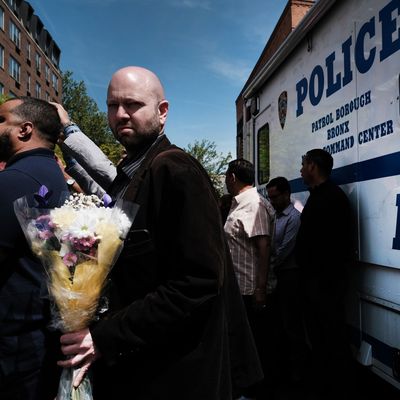
“Put simply, this Supreme Court ruling will put New Yorkers at further risk of gun violence,” Mayor Eric Adams said shortly after the Court knocked down the law restricting concealed-carry permits in the state. Many gun-reform experts agree, seeing the ruling in New York State Rifle & Pistol Association v. Bruen as a fast track to legally putting more guns on the street.
Before the century-old law was struck down, New Yorkers had to show “proper cause” proving the need for a gun for self-protection in order to obtain a permit to carry a concealed handgun outside the home. But with a conservative 6-3 majority ruling that the law violated Second Amendment rights, it will be much easier for millions more Americans to conceal-carry in public. Six other states — California, Hawaii, Maryland, Massachusetts, New Jersey, and Rhode Island — have similar laws that could be invalidated by the opinion, suggesting the possibility of easier concealed carry in cities from Los Angeles to Baltimore to Boston. According to Manhattan District Attorney Alvin Bragg, the decision “severely undermines public safety not just in New York City, but around the country.”
“No one should undervalue how big an opinion this is,” says Richard Aborn, president of the nonprofit reform group Citizens Crime Commission of New York City. “It now grants U.S. citizens the right to carry a concealed gun, anywhere, anytime. This is a tremendous change in existing law.”
The ruling leaves intact the gun laws of most other states, which is cold comfort to experts. “I think the arc of the empirical argument here is that New York State can’t do what it used to do,” says David Kennedy, a professor at John Jay College of Criminal Justice. “But it can do what a bunch of other states have done, and the research shows that when states do those things, there’s more gun crime.”
Research supports Kennedy’s assessment. Last September, former police commissioners throughout the U.S. — including former LAPD chief Charlie Beck and NYPD chief Bill Bratton — signed an amicus brief arguing that “the increased presence of concealed handguns which follows from less restrictive permitting regimes leads to higher rates of both police and citizen fatalities.” The former chiefs cited a 2017 study finding that firearm-homicide rates in states with more lax permit laws were 8.6 percent higher than in “proper cause” states such as New York. A 2018 study showed that states with lax concealed-carry applications experience a 13–15 percent higher rate in aggregate violent crime, and a 2019 study showed that states that allow law enforcement to issue concealed-carry permits experienced 11.1 percent lower homicide rates.
“It’s gone over the top,” says former Buffalo police commissioner Gil Kerlikowske of the expanded laws allowing gun owners — particularly untrained gun owners — to carry in public. Kerlikowske, who signed the 2021 amicus brief, says that many of the reasons cited by Second Amendment advocates for concealed carry in public haven’t held up on the street. “From a law-enforcement perspective, we’re skeptical of the idea that a good person with a gun is going to intervene,” he says. Kerlikowske also notes that states with new concealed-carry access may see more confrontational traffic stops, since police officers may have to assume that someone is carrying a weapon.
New applications to carry concealed weapons could come in quickly. “I would say we expect a rush for permit applications,” says Frank Merola, the clerk of Rensselaer County, where two men who were denied permits filed the lawsuit that was eventually heard by the Supreme Court. Merola compared the atmosphere to the gun-permit frenzy following presidential elections, when “lots of permit applications come in after.”
The end of New York’s proper-cause law does not mean a field day at upstate gun stores, however. The opinion, written by Justice Clarence Thomas, states that the opinion does not override “longstanding prohibitions on the possession of firearms by felons and the mentally ill, or laws forbidding the carrying of firearms in sensitive places such as schools and government buildings, or laws imposing conditions and qualifications on the commercial sale of arms.” While Manhattan no longer qualifies as a “sensitive area” under the ruling, Aborn notes that the Court did not define what such an area now means. “I’m urging states and localities to immediately start identifying sensitive places with some findings and ban the carrying concealed in those places,” he says. “Subways, stadiums, houses of worship. That will trigger years of litigation by the NRA to oppose those laws. But the Court has invited the states and localities to do so and that’s significant.”





























